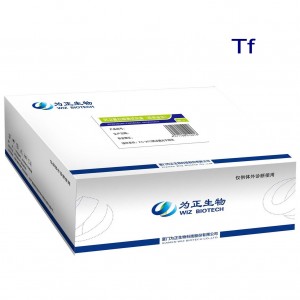In April 2013, Luminex received FDA clearance for its MAGPIX instrument, with its xTAG Gastrointestinal Pathogen Panel (xTAG GPP). This is the first clinical assay to be cleared on this instrument. It can simultaneously detect 11 common viral, bacterial, and parasitic causes of infectious gastroenteritis from a single patient sample. Other multimarker panels include Crescendo Bioscience’s Vectra DA panel for rheumatoid arthritis and Fujirebio’s ROMA panel to determine the likelihood of finding a malignancy on surgery in women who present with adnexal mass.
So how is the Black Shark Helo different from the straightforwardly named Black Shark? The main difference lies in the screen department. While the first model uses an LCD display, the Helo gets an AMOLED one. This should theoretically translate into deeper blacks and longer battery life. However, take note that its refresh rate is still at 60Hz, unlike the ASUS ROG Phone‘s 90Hz and the Razer Phone 2‘s 120Hz. A higher number means a smoother experience.
Culture.The clinical pathogen identification methods were completed in each of the participating countries (The Gambia, Mali, Kenya, and Bangladesh) and were described in detail by Panchalingam et al. (7). Briefly, the stool specimens were collected in sterile containers and examined within 24 h of passage. The stool specimens were stored at 2 to 8°C while in transit to the laboratory. Conventional bacteriological, immunological, and molecular methods were used to identify bacterial pathogens. Vibrio cholerae, Vibrio parahaemolyticus, Aeromonas spp., C. jejuni, Campylobacter coli, Salmonella spp., Shigella spp., and diarrheagenic E. coli were isolated from the appropriate selective media and identified by standard biochemical tests. The standard protocol was to test three putative lactose-positive and indole-positive E. coli-like colony morphologies selected from the MacConkey plate for diarrheagenic E. coli as previously described (7). The species and subtypes were confirmed by serotyping (for Shigella and Salmonella spp.) with commercially available antisera (Reagensia, Solna, Sweden, and Denka Seiken, Tokyo, Japan) and by PCR tests for both the heat-labile and heat-stable enterotoxin producers of ETEC, typical and atypical EPEC, and EAEC.
The authors are grateful to Universiti Kebangsaan Malaysia Medical Centre (FF–200–2012), Ministry of Higher Education Malaysia (UKM OUP-TKP–20–97/2010) for funding this project. Special thanks to Prof. Dr. Srijit Das, Assoc. Prof Dr. Azarisman Shah Mohd. Shah and Prof.Dr. Pakeer Oothuman for editing the manuscript, and the technical staffs of Physiology and Anatomy Department of UKM for their endless support.

Two characters of Code 39 have been chosen as the primarily used barcodes, namely the “+” and “–” characters (Fig. 1a). Since the barcode is a pattern of bars on a contrasting background, the assay is created using a series of silver-enhanced, dark bars on a white background. Only four channels are used in a single assay, with the remaining bars of the barcode to be printed on a sheet of white paper. Accordingly, a PDMS chip was fabricated to have four microfluidic channels (Fig. 1b) for the test. The first half of the two wide channels have a width of 3 mm, the second half have a width of 2 mm, and the channels are separated by a barrier of approximately 0.5 mm. The PDMS was prepared using the Sylgard 184 Silicone Elastomer Kit (Dow Corning) according to the instructions given; the elastomer base and curing agent were mixed in a 10:1 ratio and applied to the silicon master with features in the dimensions specified above.
Medical diagnostic tools (e.g., biosensors) respond to biochemical and physiological signals of interest and relay this information in the form of electrical or optical output, thereby reliably diagnose diseases and illnesses1. These devices, however, while readily accessible in developed countries, are often costly and complex to the average untrained person, and not easily accessible in all regions of the world2. To aid in reducing global health care costs, point-of-care (POC) diagnostics aims to provide patients with rapid real-time clinical testing and treatment, primarily in developing countries which are lack of medical facilities. Diagnosis systems of this caliber must be inexpensive, easy to use and disposable due to limitations in trained personnel, infrastructure, medical instruments, and operational funds3,4. Recent diagnostics research is showing a trend toward not only the design of low-cost instruments that are easy to use5,6,7,8,9,10,11,12,13, but also the integration of testing applications into mobile devices. Smartphones, which have millions of users worldwide including third-world regions, can be adapted for diseases detection2,3,4, and the wireless system can relay patient information and test results to health professionals for further analysis if necessary. To date, POC devices already in use include glucose meters, pregnancy tests, and infectious disease tests which commonly employ strip testing using colorimetric, fluorescence, or electrochemical detection methods5,14. Detection methods employing mobile devices have predominately adapted to the traditional approaches; colorimetric detection has been studied most thoroughly3,4,15,16,17,18,19,20, though researchers have demonstrated that electrochemical8,21 and luminescence-based methods22 are also feasible options.
To further investigate the intracellular mechanism involved in the attenuated inflammatory response during Mrp8 self-tolerance and cross-tolerance, we assessed two downstream intracellular signal transduction components p38 and the inhibitor of κBα (IκBα) common to both the TLR2 and TLR4 signalling pathways. The phosphorylated version of p38 has been shown to accurately measure p38 activity37. IκBα inhibits the transcription factor NF-κB by retaining it in the cytoplasm. Upon activation of the NF-κB pathway, IκBα is rapidly phosphorylated and degradated, which liberates NF-κB. Activation of NF-κB therefore correlates with phosphorylation of IκBα and requires proteolysis of this inhibitor38.
Access Full Research Report On Heart Attack Diagnostics Market Analysis: www.grandviewresearch.com/industry-analysis/heart-attack-diagnostics-market

The popularly studied biotin-streptavidin binding assay was used as a model system to evaluate the barcode assay principle because of its well-studied binding interactions; it is known to bind with high affinity (Ka ≈ 1015 M−1) and specificity, thereby making it a suitable model for many bio-recognition interactions37,38,39,40.
Gopal, M., Vanessa, B., Akanksha, M., Nicole, J. & Howard, L. W. Silencing microRNA-155 ameliorates experimental autoimmune encephalomyelitis. J Immunol. 187, 2213–2221(2011).
In short: Huawei finally has a class-leading camera on its hands, to put it in the same arena as the Samsung Galaxy S9 and Google Pixel. The only other thing we’d want it s a super-wide lens… which is exactly the route the Mate 20 Pro has taken, thus what we’d expect to see in the ‘P30′ in 2019.
Brown, M. A. & Jones, W. K. NF-kappaB action in sepsis: the innate immune system and the heart. Front. Biosci. 9, 1201–1217 (2004).
Identification and Clinical Significance of Helcococcus species, with Description of Helcococcus seattlensis sp. nov. from a Patient with Urosepsis | Psa Test Cost Related Video:
We can always satisfy our respected customers with our good quality, good price and good service due to we are more professional and more hard-working and do it in cost-effective way for T4 Elisa Kit , Diagnostic Kit For Isoenzyme Mb Of C Reatine Kinase , Colloidal Gold Rapid Test Kits , we rely on own advantages to build a mutual-benefit commerce mechanism with our cooperative partners. As a result, we have gained a global sales network reaching the Middle East, Turkey, Malaysia and Vietnamese.






